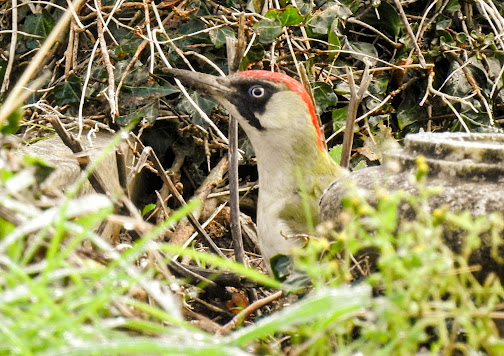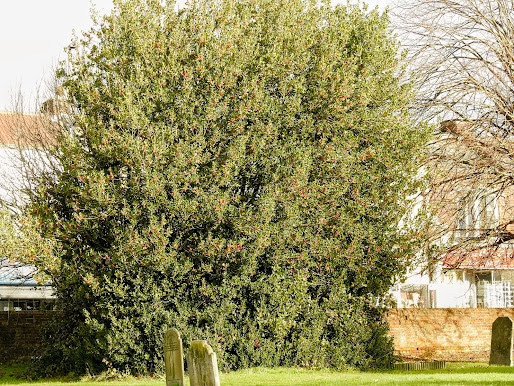Thursday 1st December 2022
I had some time off this morning and seeing it was a bright sunny morning, I thought I would try my luck with the Purple Sandpipers off Southsea Castle early this morning. OK, it wasn't that early, but it was 10am when I arrived in the large car park behind the D-Day Museum. It is now officially Winter as the temperatures have really dropped recently and last night it went down to near freezing and was only about 4 degrees in my garden first thing today. I made sure I was well wrapped up against the cold, but it wasn't really too bad with a very light north-easterly.
I made my way to the top by the east side of the Castle and viewed the newly laid rock formation below. Despite a lengthy search, I could only find just one roosting bird on the rocks, though ten birds were reported here yesterday. There was no sign of the Grey Phalarope reported here on Monday either and the only other birds of note I could see out on the Solent were at least three distant Cormorants making their way out of the Portsmouth Harbour entrance on a very calm rising tide. There was no sign of any Black Redstarts around the Castle or Bandstand area, though I did hear a Rock Pipit calling, but not seen.
Seeing it was a lovely morning, I parked the car just outside Highland Road Cemetery and then took a walk around my ‘local patch’. I notched up a reasonably good species total this morning with the Green Woodpecker showing well again; a female bird this time among the 19 species recorded. Two pairs of Collared Doves were seen high up in the Horse Chestnuts on the south side of the Cemetery; for they have been scarce here of late, though I am sure their numbers will build up as Winter progresses.
The species seen or heard within the Cemetery this morning included the following:
- Great Black-backed Gull
- Herring Gull
- House Sparrow
- Starling
- Robin
- Wren
- Great Tit
- Blue Tit
- Goldcrest
- Feral Pigeon
- Wood Pigeon
- Collared Dove
- Carrion Crow
- Jay
- Magpie
- Greenfinch
- Goldfinch
- Blackbird
- Green Woodpecker
I was surprised to see quite a few insects still on the wing and one particular area over on the south -east side of the Cemetery, by the main footpath, a couple of large Ivy Plants held not only good numbers of House Flies resting on their leaves in the sunshine, but also a couple of species of Hoverfly: a male Marmalade Hoverfly and also a female Syrphus species. Sharing the same Ivy plant was a Common Wasp and also a Common Yellow Dung Fly! All making the most of the bright sunshine.
Just the usual plants on show this morning that included Smooth Sow-thistle, Yarrow, a few Daisies and Common Field-speedwell. I did find, however, some Honeysuckle still in flower that was growing on graves over on the south-east corner of the main footpath! Just goes to show that Global Warming is seriously affecting plants as well as other natural fauna. Of course, another lovely morning’s walk around one of my favourite parts of Southsea.
Of interest, the Grey Phalarope I saw on Monday is still present in exactly the same place on Farlington Marshes and yesterday’s family of Russian White-fronted Geese are still on Farlington Marshes still, in the Hayfield on the north-east corner of the reserve. A pair of Short-eared Owls have taken up residence in the Point Field on the same reserve yesterday and would not be surprised if they show well late this afternoon.
Apparently, the Short-eared Owls did not perform for the crowd at Farlington Marshes this afternoon, frustrating the birders hoping to grab some decent photos in the near perfect, but cold conditions. The Grey Phalarope was still there on the same pools at the back of the Deeps and I was pleased to hear that Andy Tew got to see it along with the Black Brant and the Russian White-fronted Geese (see photos of the Geese). Fellow ‘Lazee Birder’ Garry Fennemore saw both the Great Northern Diver and the 3 Black-necked Grebes off Hayling Oyster Beds this afternoon and it's good to see someone checking the birds on Paulsgrove Lake, a well under-watched area and yielded a few nice birds including Greenshank, Goldeneye and good numbers of both Great Crested Grebe and Mergansers.






















No comments:
Post a Comment